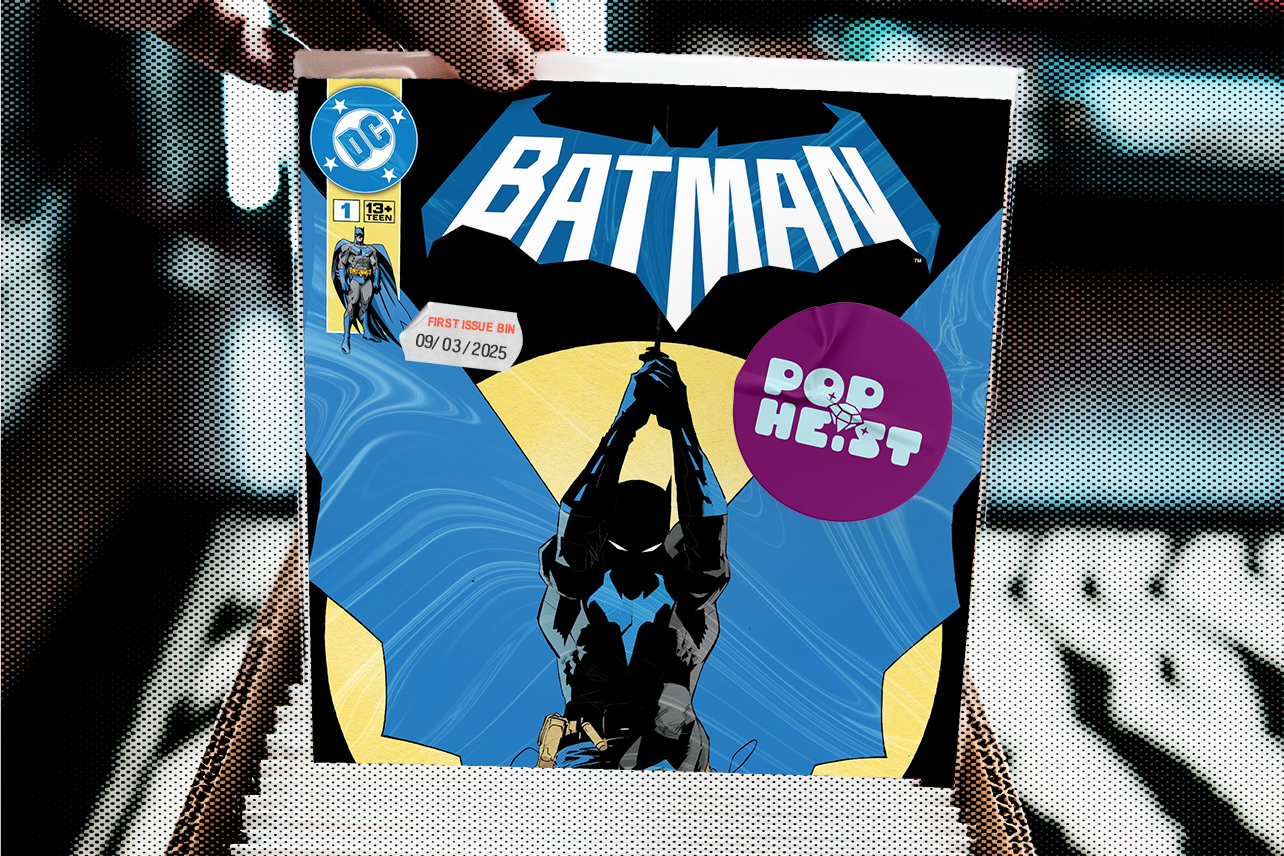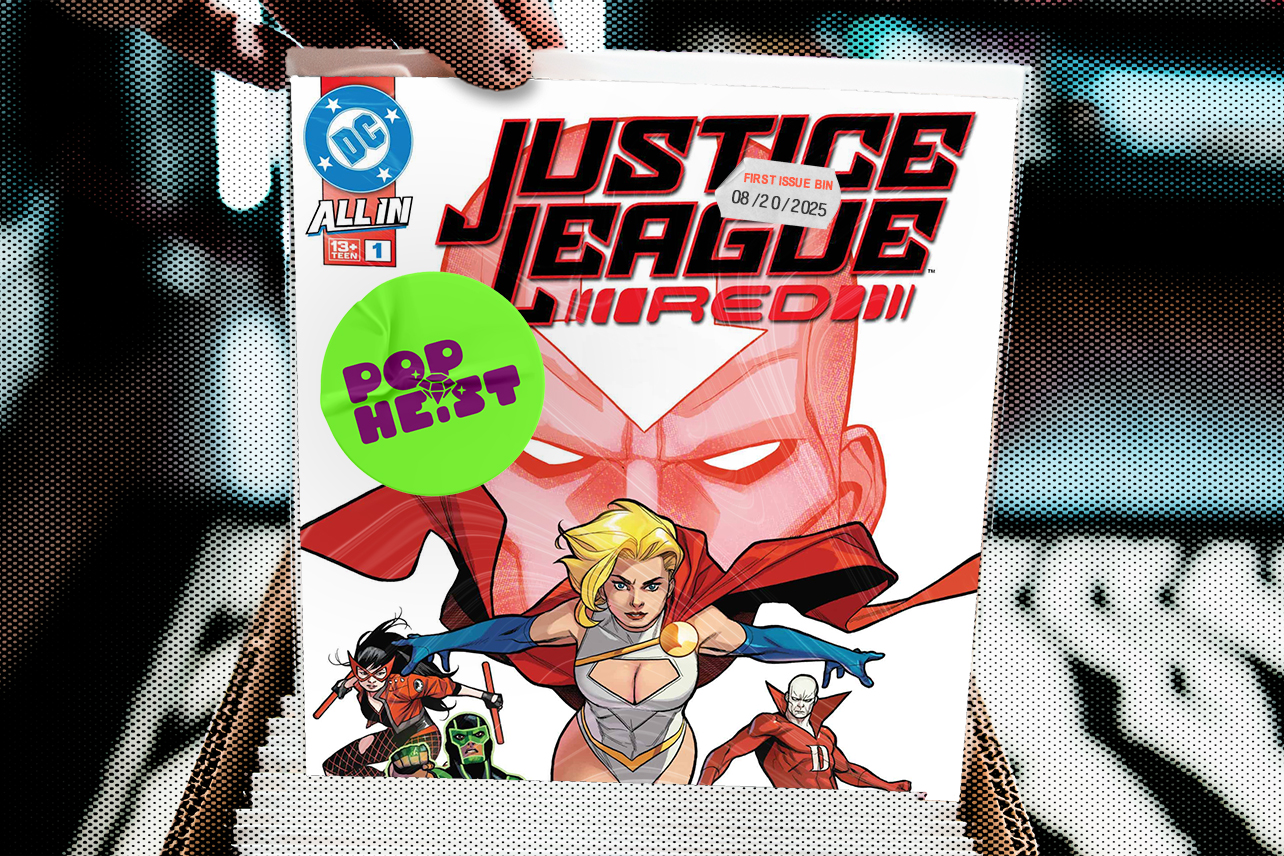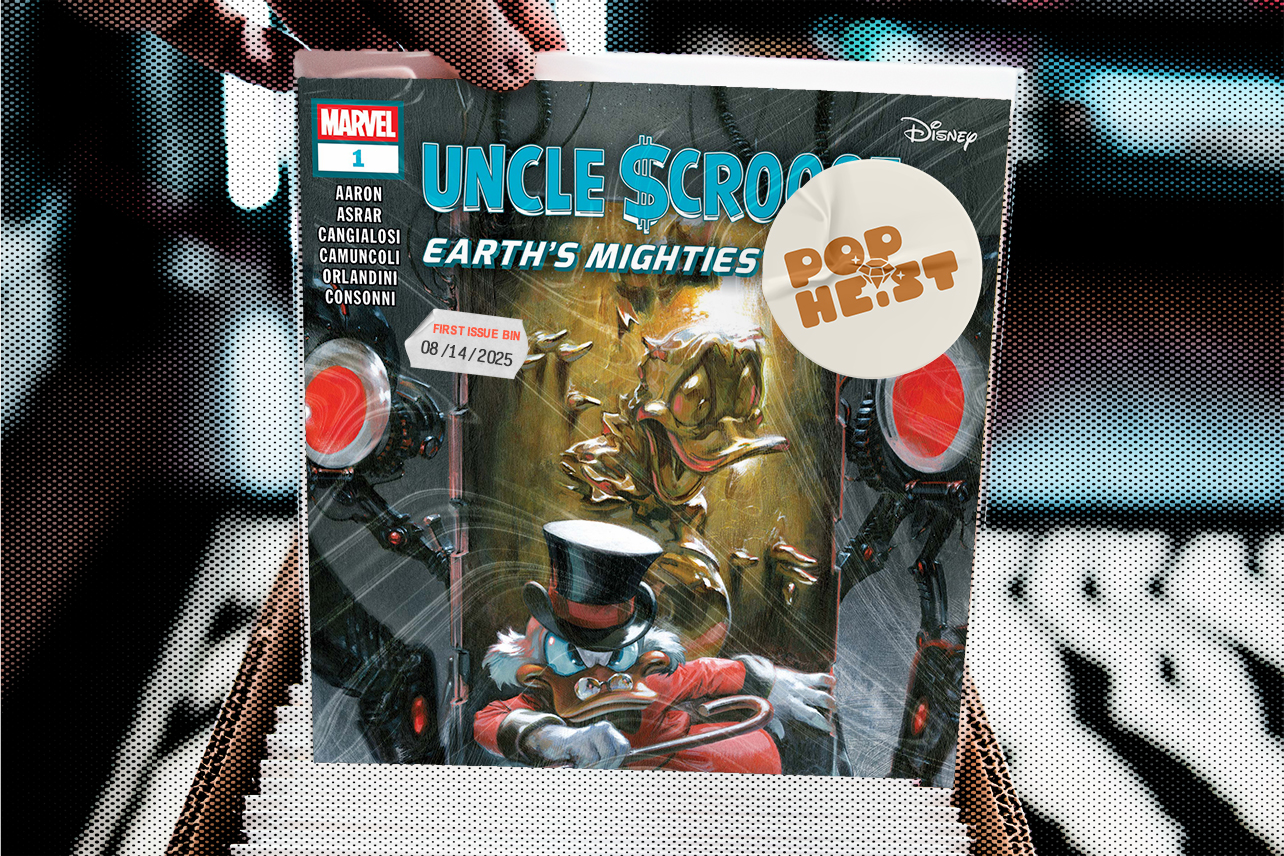Welcome to the First Issue Bin, where I — Ethan Kaye — randomly grab one of this week's comics that’s just starting up and give you the details on whether it should get added to your collection … or remain on the comic shop shelf.
New History of the DC Universe #1
Writer: Mark Waid, with Dave Wielgosz
Artists: Todd Nauck, Jerry Ordway
Color Artist: Matt Herms, John Kalisz
Letterer: Todd Klein
Editors: Brittany Holzherr, Andrew Marino

DC's continuity is endlessly challenging, what with the numerous reboots, crises, and story-shattering retcons. A book like New History of the DC Universe #1 needs to come out every 20 years or so. With comic continuity changing constantly (four alliterative Cs!), it's refreshing for a well-versed scribe like Mark Waid to step in and say, "Hey, here's everything that's happened up until now. Here's what matters, who did it, what counts and what doesn't count."
This series is less a comic and more of a road map, and less of a road map than it is a list of key stops on your journey from point A to point B.

There is no plot, only the barest hint of framing device (Barry Allen, the Flash, is writing the history of the DCU in his office), and zero dialogue. Waid and artists Todd Nauck and Jerry Ordway start at the beginning of the universe, introduce major and minor characters, say what they were doing at that time, and move on to the next one. Nothing is really ranked higher than anything else, and it's all treated pretty even-handedly. The Golden Age Atom is given as much space as Arion from Atlantis. No Batman. No Superman. Wonder Woman appears in a crowd shot.
In the sense that it's enormously enlightening to see who counts and who doesn't in the current DCU, it's a great book. The art is pitch perfect and full page, and even the most minor of characters get their moment to bow and wave to the crowd (Viking Prince? Horsewoman? The Wyoming Kid?). Waid is perhaps the only writer alive who could write this story, as he's known far and wide for being the greatest keeper of DC lore working in comics (see his work on Batman/Superman: World's Finest and Justice League Unlimited for those deep character cuts).
However … it reads very flat. And I like that. It's no fat, just meat. But it's a hard sell to anyone looking for an entertaining read. Nothing is really expanded on beyond "so-and-so was also there at that time." It's a historical outline, a list of bullet points with accompanying illustration. It moves fast because there isn't a plot.

If I was a kid just getting into the DCU, I'd have loved this book. If you have a kid that's looking into comics beyond just Batman or Superman, this plants dozens of interesting flags to check out. As it is, I missed out on the original History of the DC Universe in 1986 by Marv Wolfman and George Pérez, but caught up with the revisions in 52 and Countdown over the years. Here DC goes all out with a standalone series by Waid, telling the tale of their publishing history since the beginning of time itself. As a longtime DC reader, I liked it. But understand that this is just as much a reference book as it is a funnybook.
And as a reference book, it cites sources. The last few pages are by Dave Wielgosz, annotating each of the events and characters from the previous pages with a little background information and, most importantly, comic titles and issue numbers. It's a valuable resource for writers of comics and also those writing about comics. Need to know when Dr. Occult donned his red cape? Or when the Spirit of America joined with a human to create Uncle Sam? That's all there in the endnotes. Like I said, super valuable.

There are really only two companies that could put this kind of book out: Marvel and DC. [Editor's note: And Marvel did in 2019, in a series also by Mark Waid!] No one else has the interconnectedness of these two monsters that would need a multi-issue miniseries to explain their continuity. Image is too fractured, too many universes. Dark Horse's Hellboy is too linear. Maybe the Teenage Mutant Ninja Turtles? With the nearly 90 years of DC history behind it, every so often these things need to be spelled out, and done in a way that doesn't dwell on (or elevate) any particular event or storyline.
I loved it, but I'm a comics nerd and I loved all these minor characters getting a little acknowledgement after all these years dwelling in obscurity (The original Suicide Squad? Tiger-Man? Nighthawk and Cinnamon?). It's a book for fans who want to immerse themselves in the world of DC, those who want to know who's who. There's no fluff, it's straight to the point, and that serves it well. In short, it's a must-buy for DC fans, but it's meant to inspire scholars, not imaginations.
Wotan: Who?
Nimue: What's that?
Captain Fear: Is he a Batman guy?
Arak, Son of Thunder: Wait, who's Arak, Son of Thunder?
Zahavah: Not sure who that one is.
Hop Harrigan: You made that one up, didn't you?
Verdict: If you're reading this column, odds are you're a comic fan — and more than a casual one. Get this book, absorb it, and use it to spark interest in other, older comics.
If you haven't already, consider supporting worker-owned media by subscribing to Pop Heist. We are ad-free and operating outside the algorithm, so all dollars go directly to paying the staff members and writers who make articles like this one possible.






